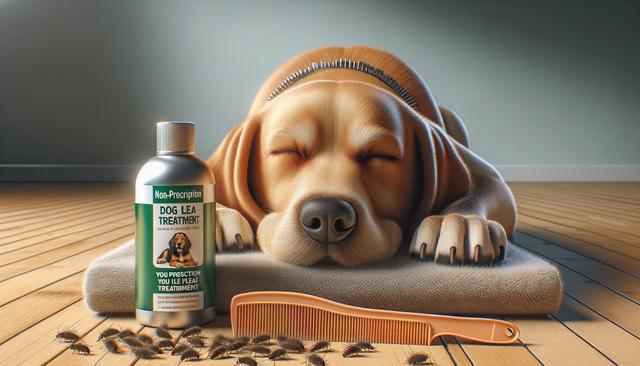
Your Guide to Safe and Effective Flea Treatments for a Healthier Dog Year-Round
Understanding the Flea Lifecycle
To effectively tackle fleas, it’s crucial to understand their lifecycle. Fleas go through four stages: egg, larva, pupa, and adult. This cycle can vary in length depending on environmental conditions, with warmer climates accelerating growth. Recognizing these stages helps pet owners choose the right treatment strategy. For example, some treatments target adults, while others focus on interrupting the life cycle by preventing eggs from developing. By understanding the lifecycle, you can implement a dual approach, using treatments that address both adult fleas and their offspring, ensuring comprehensive control.
Topical Treatments: A Reliable Option
Topical treatments are among the most popular methods for flea control. These are applied directly to a dog’s skin, typically at the base of the neck. They work by spreading across the skin and killing fleas on contact. These treatments are known for their ease of use and effectiveness, often providing protection against fleas for up to a month. When choosing a topical treatment, ensure it is suitable for your dog’s age and weight. Consult your veterinarian for recommendations, especially if your dog has sensitive skin or any health conditions that might interact with specific treatments.
Oral Medications: An Alternative Approach
Oral medications present an alternative to topical treatments, proving to be highly effective in disrupting the flea life cycle. These medications work from the inside out, entering your dog’s bloodstream and affecting fleas when they bite. Many dog owners prefer oral treatments because they are less likely to be washed off during baths or swimming sessions. They also tend to be quick-acting, with some products eliminating fleas in a matter of hours. However, it’s essential to follow the dosage instructions carefully and consult your vet to avoid any potential side effects or interactions with other medications your dog might be taking.
Natural Remedies to Consider
For those looking for chemical-free solutions, several natural remedies can help reduce flea infestations. These methods may not replace conventional treatments but can support them. Consider the following options:
- Regular grooming and bathing with a flea comb and mild soap.
- Using natural oils like lavender and cedarwood as repellents.
- Maintaining a clean environment by washing bedding and vacuuming frequently.
While natural remedies are generally safe, always monitor your dog for any adverse reactions and consult your veterinarian if you decide to try them.
Preventative Measures All Year Round
Prevention is key in maintaining a flea-free environment for your dog. Implementing year-round preventive measures can significantly reduce the chances of an infestation. Regular treatments, whether topical or oral, are your first line of defense. Additionally, maintaining a clean household and yard can deter fleas from establishing a foothold. Keep your dog’s living area clean, wash bedding frequently, and consider yard treatments if you live in a high-risk area. By being proactive and consistent with these measures, you can help ensure your dog remains comfortable and healthy, free from the irritation of fleas.
Conclusion: Keeping Your Dog Comfortable and Healthy
Protecting your dog from fleas requires a comprehensive approach that includes understanding their lifecycle, selecting the appropriate treatment, and implementing preventive measures. With the right strategy, your dog can enjoy a comfortable, itch-free life, and your home can remain a haven free from pests. Always consult with your veterinarian to tailor a plan that best suits your pet’s needs, and remember that consistency is key in maintaining your dog’s health and happiness throughout the year.